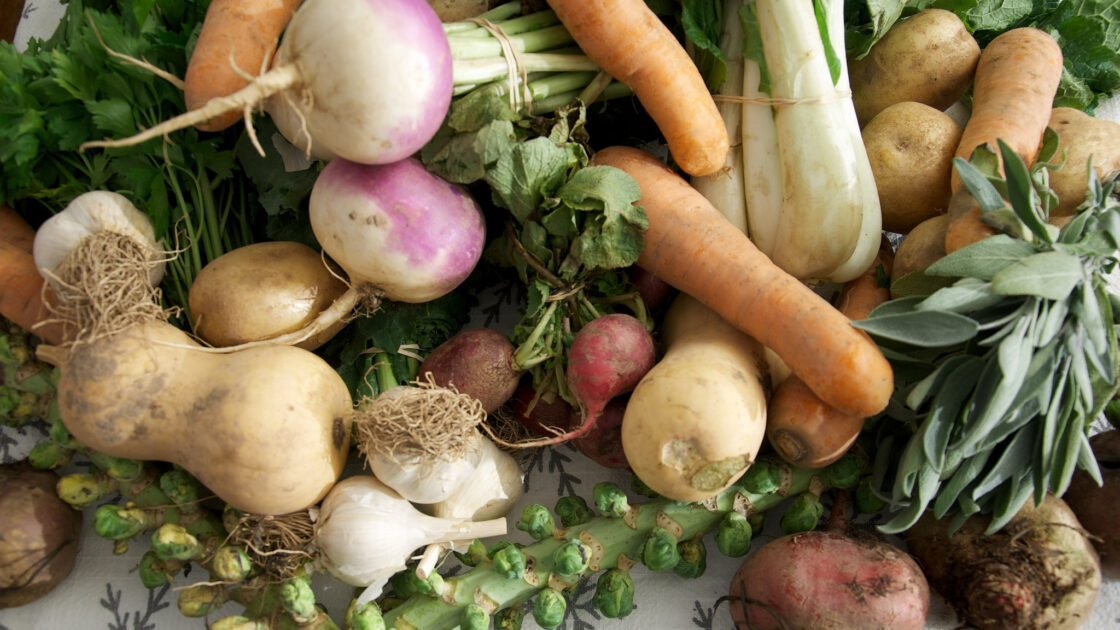7 Tips For Eating Local Food in the Wintertime

During the summer months enjoying local food isn’t hard. You may only have to wander into your own yard. From tomatoes to watermelon, zucchini, summer squash, herbs, and cucumber–local food is everywhere. But then comes the winter and much of the choice seems to dry up. It’s natural and it’s part of living in an area with four seasons. And while on some level you shouldn’t beat yourself up for eating outside of your area, you can take steps to continue eating local food even when it’s cold outside. Here’s how:
1. Enjoy squash.
Winter squash comes in a number of delicious varieties from spaghetti to butternut. They’re hearty winter vegetables that can easily be found locally. Winter squash is inexpensive and it keeps for a long time. Add it to risotto, lasagna, quinoa, pasta, or even tacos. Spaghetti squash is a great way to enjoy Italian food without the pasta as well.
2. Lean on sweet potatoes.
Sweet potatoes and other root vegetables are widely available locally in the fall and winter. They’re nutritionally dense and super inexpensive. Add them in place of regular potatoes to amp up your nutritional value. Make baked sweet potatoes, sweet potato fries, sweet potato mash, sweet potato pancakes, and the list goes on.
3. Think hearty greens.
Collards, kale, and other dark leafy greens are also widely available in the wintertime. Replace salads with hearty green side dishes. Make hearty greens more digestible by steaming them slightly.
4. Find greenhouse producers.
We’re still getting pretty fantastic local tomatoes in the winter thanks to a greenhouse producer about 30 minutes away from my house. There’s another local producer that grows absolutely delicious arugula, broccoli, kale, snow pea, and radish microgreens that are available right now thanks to a serious greenhouse setup.
5. Join a CSA
If you don’t want to seek out local produce, do the easy thing and join a CSA, which stands for Community Supported Agriculture. That way they’ll bring it to you. You’re basically buying a portion of your favorite farm’s harvest. My only recommendation is to make sure your CSA is organic or that the farmers don’t use pesticides on their crops if possible.
6. Start canning.
If you don’t have it available this year, next year consider canning in the summertime so come winter you’ll get to enjoy some more variety of the summer bounty. Or if you’re not a canner, you could also buy locally canned foods or hit up your friends that are ahead of you in the canning game.
7. Simplify your recipes.
During the winter months it’s a little more difficult to find good local produce, but if you look closely, you might be surprised what’s available. Simplify your recipes and research recipes that highlight heartier winter vegetables. Soups are a great place to put the winter local bounty to work. Think kale and white bean or butternut squash bisque. Yum!
Related on Organic Authority
Overstock.com Delivers the Fresh CSA Vegetables You Should be Eating Right Now
9 Healthy Winter Recipes with Root Vegetables
How to Store Root Vegetables For The Winter
Image: Charles Smith-Stoneledge farms CSA (Community Supported Agriculture)

